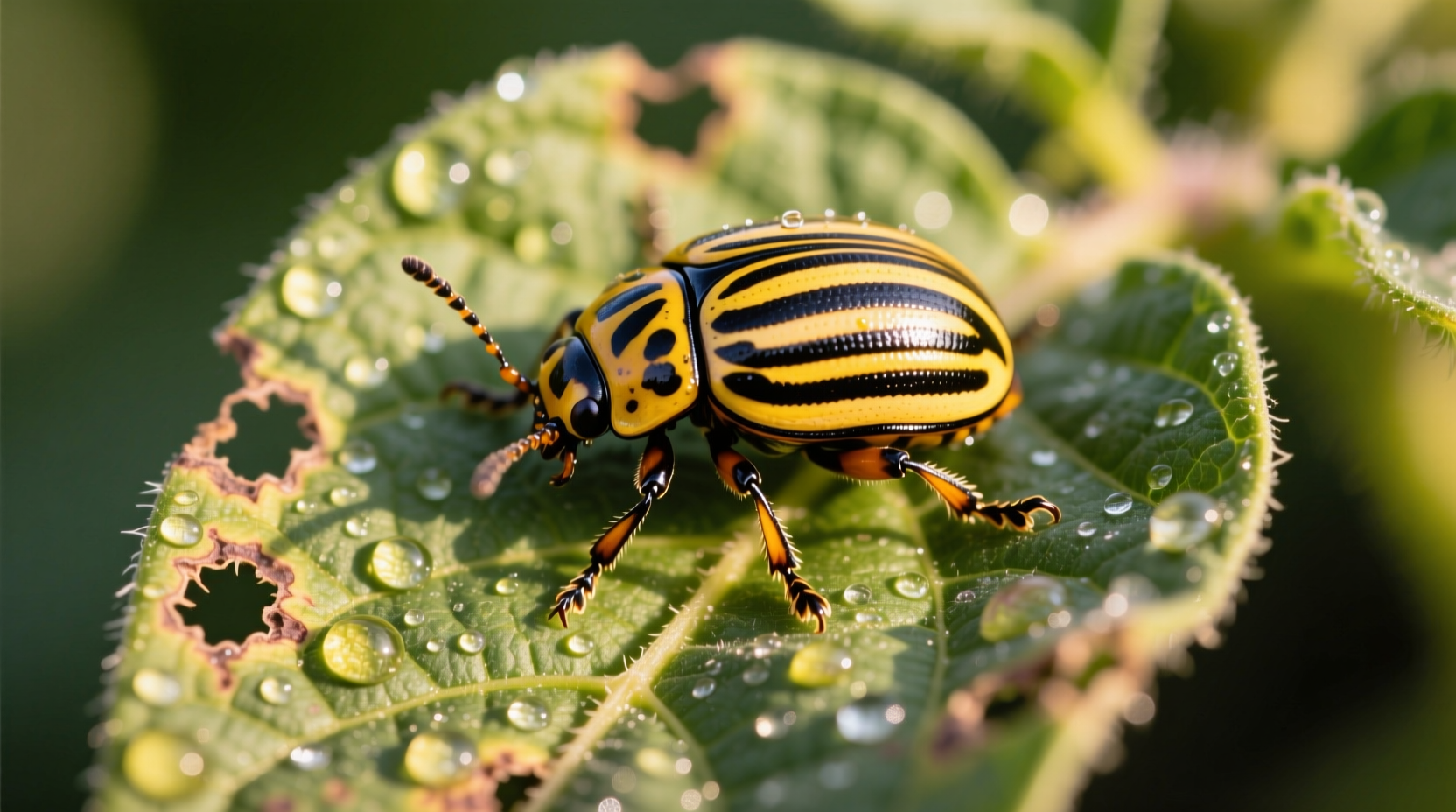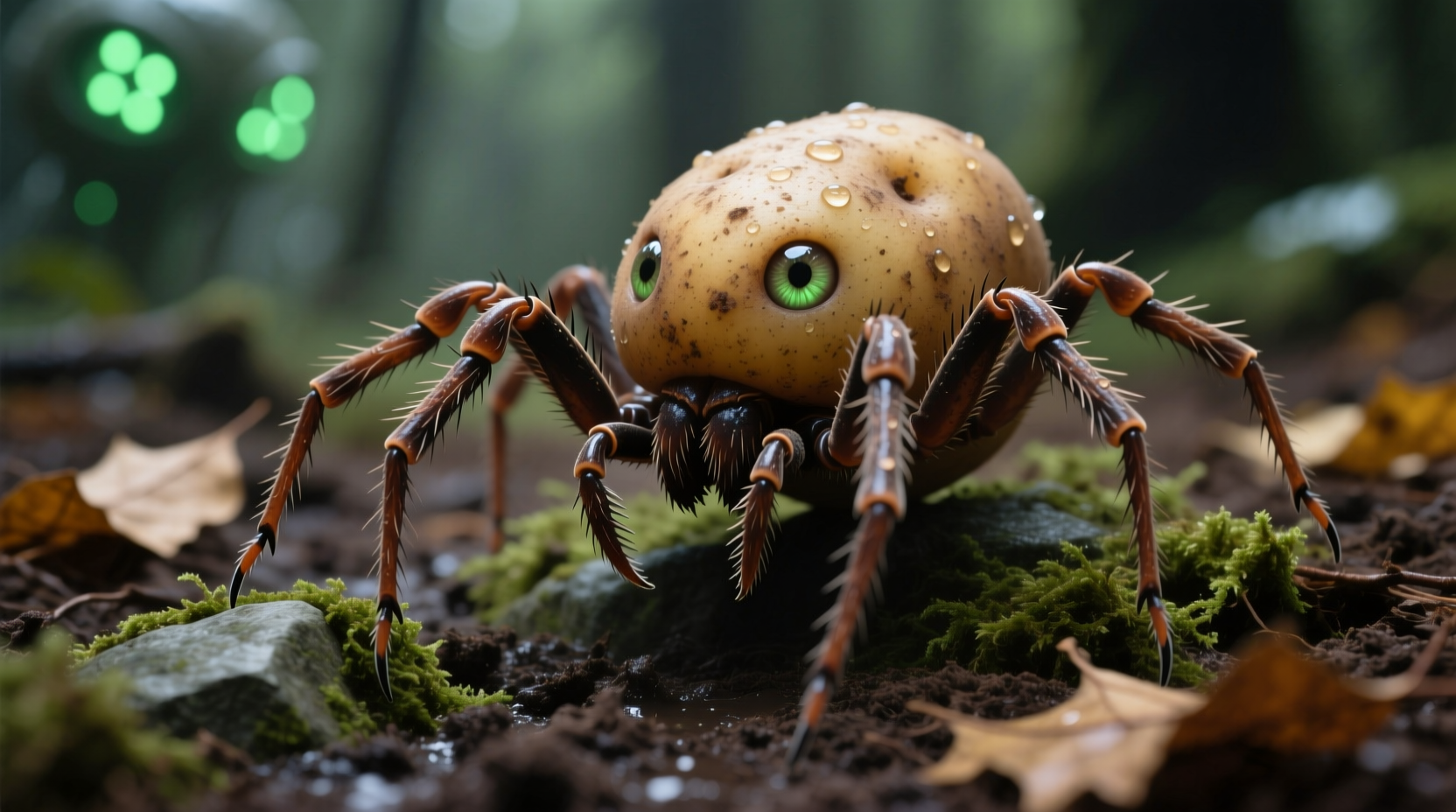There is no actual spider species known as the "potato spider." The term typically refers to the Colorado potato beetle (Leptinotarsa decemlineata), which is a beetle—not a spider—that damages potato crops. This common misconception arises from the beetle's appearance and habitat.
Have you ever sliced into a potato and jumped at the sight of a small, multi-legged creature? You're not alone. Thousands of people search for "potato spider" each month, worried they've discovered a dangerous arachnid in their food. Let's clear up this widespread myth once and for all with scientifically accurate information you can trust.
Why the "Potato Spider" Myth Persists
The confusion stems from several factors that make certain potato pests resemble spiders to the untrained eye. When people encounter small, multi-legged creatures near potatoes, they often jump to conclusions about "spiders in potatoes." Understanding this misconception is the first step toward accurate identification.
| Common Misidentification | Actual Identity | Key Distinguishing Features |
|---|---|---|
| "Potato spider" | Colorado potato beetle larva | 6 legs (beetles), soft body, red/orange color |
| "Spiders in potatoes" | Soil-dwelling insects | 6 legs, not arachnids, typically harmless |
| "Potato bug spider" | Darkling beetle | 6 legs, hard exoskeleton, nocturnal |
The Real Culprit: Colorado Potato Beetle Explained
The Colorado potato beetle (Leptinotarsa decemlineata) is overwhelmingly the insect mistaken for a "potato spider." This agricultural pest has plagued potato farmers since the 1800s and remains a significant concern for home gardeners today.
According to the USDA Agricultural Research Service, the Colorado potato beetle has distinctive features that differentiate it from spiders:
- Adult beetles have 10 alternating black and yellow stripes on their wing covers
- Both adults and larvae have six legs (spiders have eight)
- Larvae are reddish-orange with black heads
- They feed exclusively on plants in the nightshade family (potatoes, tomatoes, eggplants)

Potato Pest Timeline: From Field to Table
Understanding when and how pests interact with potatoes helps clarify why "potato spiders" aren't what you think:
- Planting season: Adult beetles emerge from soil where they've overwintered
- Early growth: Beetles lay clusters of orange eggs on leaf undersides
- Mid-season: Larvae hatch and feed on leaves (not tubers)
- Harvest time: Tubers are underground, protected from most pests
- Storage: Properly stored potatoes rarely encounter pests
The University of Minnesota Extension confirms that Colorado potato beetles feed on foliage, not the tubers themselves. Finding a beetle inside a potato would be extremely rare under normal growing and storage conditions.
Actual Risks: Spiders and Other Creatures in Produce
While the "potato spider" is a myth, it's natural to wonder about actual risks. The reality might surprise you:
- Spiders rarely infest potato crops or storage facilities
- The FDA permits trace amounts of natural defects in food (including insects) that pose no health risk
- Most "spiders in potatoes" reports involve misidentified beetles or soil insects
- Commercially grown potatoes undergo multiple inspection stages
According to the FDA's Food Defect Action Levels, potatoes may contain up to 20 small insects per 100 pounds—a level considered safe and unavoidable in agricultural production.
Practical Identification Guide for Home Gardeners
When examining potatoes or plants, use these identification tips to distinguish between common pests:
Beetle vs. Spider: The Leg Test
All beetles have six legs. If you count eight legs, it's an arachnid (spider, mite, or tick), but these are extremely unlikely to be found inside potatoes.
Spotting Colorado Potato Beetle Damage
- Look for skeletonized leaves (only veins remain)
- Check undersides of leaves for orange egg clusters
- Notice defoliation progressing from lower to upper plant
Prevention Strategies That Actually Work
Based on research from land-grant universities, effective prevention includes:
- Rotating crops annually (potatoes shouldn't return to same spot for 3 years)
- Using floating row covers early in the season
- Hand-picking beetles and larvae (drop in soapy water)
- Applying neem oil or spinosad-based products when needed
Food Safety Practices for Consumers
Whether you grow your own potatoes or buy them from stores, these practices ensure safety:
- Washing: Always scrub potatoes under running water before cooking
- Inspection: Check for unusual holes or damage before purchasing
- Storage: Keep in cool, dark place with good air circulation
- Preparation: Cut away any questionable areas when peeling
The CDC confirms that proper washing and cooking eliminates virtually all food safety concerns related to insects in produce.
When to Worry: Actual Food Safety Concerns
While "potato spiders" aren't a real threat, these situations warrant attention:
- Extensive tunneling inside potatoes (likely potato tuber moth)
- Mold or unusual odors indicating spoilage
- Multiple damaged potatoes suggesting storage issues
In these cases, discard affected potatoes and check storage conditions. Healthy potatoes with minor surface blemishes remain safe to eat after proper preparation.
Debunking Viral "Potato Spider" Videos
Social media occasionally features alarming videos of "spiders" emerging from potatoes. These typically show:
- Colorado potato beetle larvae (often mislabeled as spiders)
- Soil-dwelling insects like darkling beetles
- Occasionally, actual spiders that accidentally entered during storage
The University of Kentucky Entomology Department notes that viral videos often use dramatic editing to exaggerate rare occurrences, creating unnecessary fear about food safety.
Conclusion: Separating Fact from Fiction
The "potato spider" is a persistent myth born from misidentification of common agricultural pests. Understanding the actual insects involved—primarily the Colorado potato beetle—helps gardeners address real concerns while alleviating unnecessary fears about spiders in food. By following proper identification techniques and food safety practices, you can enjoy potatoes with confidence.
Is there really such a thing as a potato spider?
No, there is no actual spider species called a "potato spider." The term usually refers to the Colorado potato beetle, which is a beetle with six legs, not a spider with eight legs. This common misconception arises from the beetle's appearance and habitat near potato plants.
Can spiders actually live inside potatoes?
It's extremely rare for spiders to live inside potatoes. Spiders don't burrow into tubers, and potatoes grow underground with protective skins. Most reports of "spiders in potatoes" involve misidentified insects like Colorado potato beetle larvae or soil-dwelling beetles.
What should I do if I find an insect in my potato?
If you find an insect, first determine if it's inside the potato (rare) or on the surface. For surface insects, simply wash the potato thoroughly. If an insect is inside, cut away the affected area plus one inch around it. The rest of the potato remains safe to eat after proper cooking.
How can I prevent pests from damaging my potato plants?
Effective prevention includes crop rotation (don't plant potatoes in the same spot for 3 years), using floating row covers early in the season, hand-picking pests, and applying organic controls like neem oil when necessary. Healthy soil and proper spacing also help prevent pest problems.
Are potatoes with insect damage safe to eat?
Yes, potatoes with minor insect damage are safe to eat. Simply cut away any damaged areas plus one inch around the damage. The FDA permits trace amounts of natural defects in food that pose no health risk, and proper cooking eliminates any potential concerns.











 浙公网安备
33010002000092号
浙公网安备
33010002000092号 浙B2-20120091-4
浙B2-20120091-4